The History of Aviator Sunglasses, Part 7 – The Air Force HGU-4/P
The familiar WWII era AN6531 Comfort Cable aviator sunglasses were still issued in relatively unchanged form long after V-J day. With darker lenses than the 1941 originals they would become known as Type G-2 aviator sunglasses. Specification numbers had changed as the Air Force became an independent branch of the service in 1947, but issue sunglasses retained the same basic shape they’d had since 1941. This lasted through the Korean conflict and into the late 1950s.
Helmets, on the other hand, had advanced quickly in design. At the start of WWII helmets were made in various combinations of leather and fabric. They didn’t look too different from football helmets of the era. By the late 1940s injection molded plastics were being used, with communications systems and oxygen masks being factored into the design. Visors were added in the 1950s to guard against potential wind blast. The traditional aviator sunglasses were simply too bulky to fit under the new style helmets.
A new design was developed that had a more comfortable library temple, was easier to put on and take off with helmets and headsets and was more compatible with oxygen masks. They were designated as the U.S. Air Force Type HGU-4/P aviator sunglasses and recommended for use on November 5th 1958.
Here’s a page from the evaluation:
And so the Type HGU-4/P aviator sunglasses were duly adopted by the Air Force. They were in use by astronauts throughout the heyday of NASA’s Mercury and Apollo missions in the 1960s, were said to be the first sunglasses worn on the moon, and continue to be used today, although aviator sunglasses have largely been supplanted by tinted visors in flight helmets.
The first contractor was American Optical, who developed the style. They were joined by Randolph Engineering in the 1980s. They’re still made in the USA and available at a reasonable price since Government contracts are awarded to low bidders.
They’ve been mil-spec for over 50 years compared to about 17 for the AN6531 shape. What’s odd is how WWII type AN6531 aviator sunglasses remain more iconic. As discussed in Part 6 of this series, the AN6531 was immediately adopted by civilian manufacturers. Most had been producing these aviator sunglasses under contract to the military and didn’t have to retool to get them out quick to consumers. By comparison the HGU-4/P has flown below the radar.
Regardless it, too, is an iconic shape. In a way I think it might be more influential in that most aviator styles sold at optical stores seem to derive from it.
Here are links to the first six installments of the History of Aviator Sunglasses:
I’m working on a couple projects, so posts might not be 5 days a week for the time being. I’ll try to hit Mondays and Tuesdays for sure. Scroll to the top of the sidebar to the right and SUBSCRIBE to keep track of new posts.

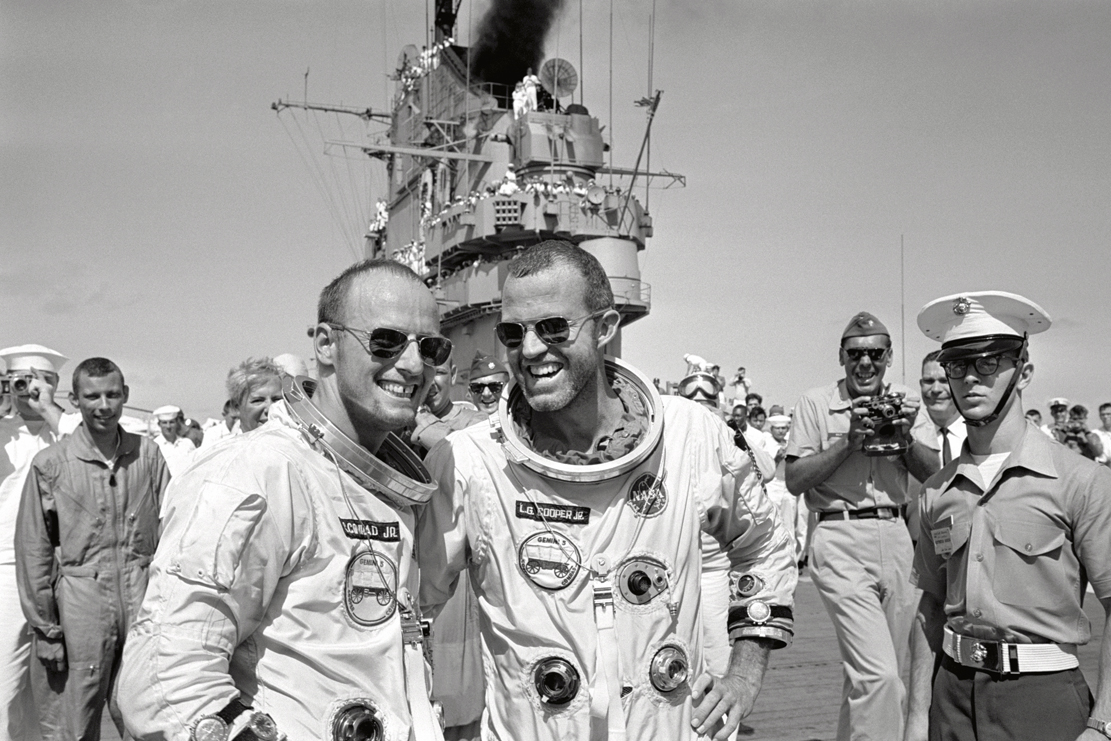
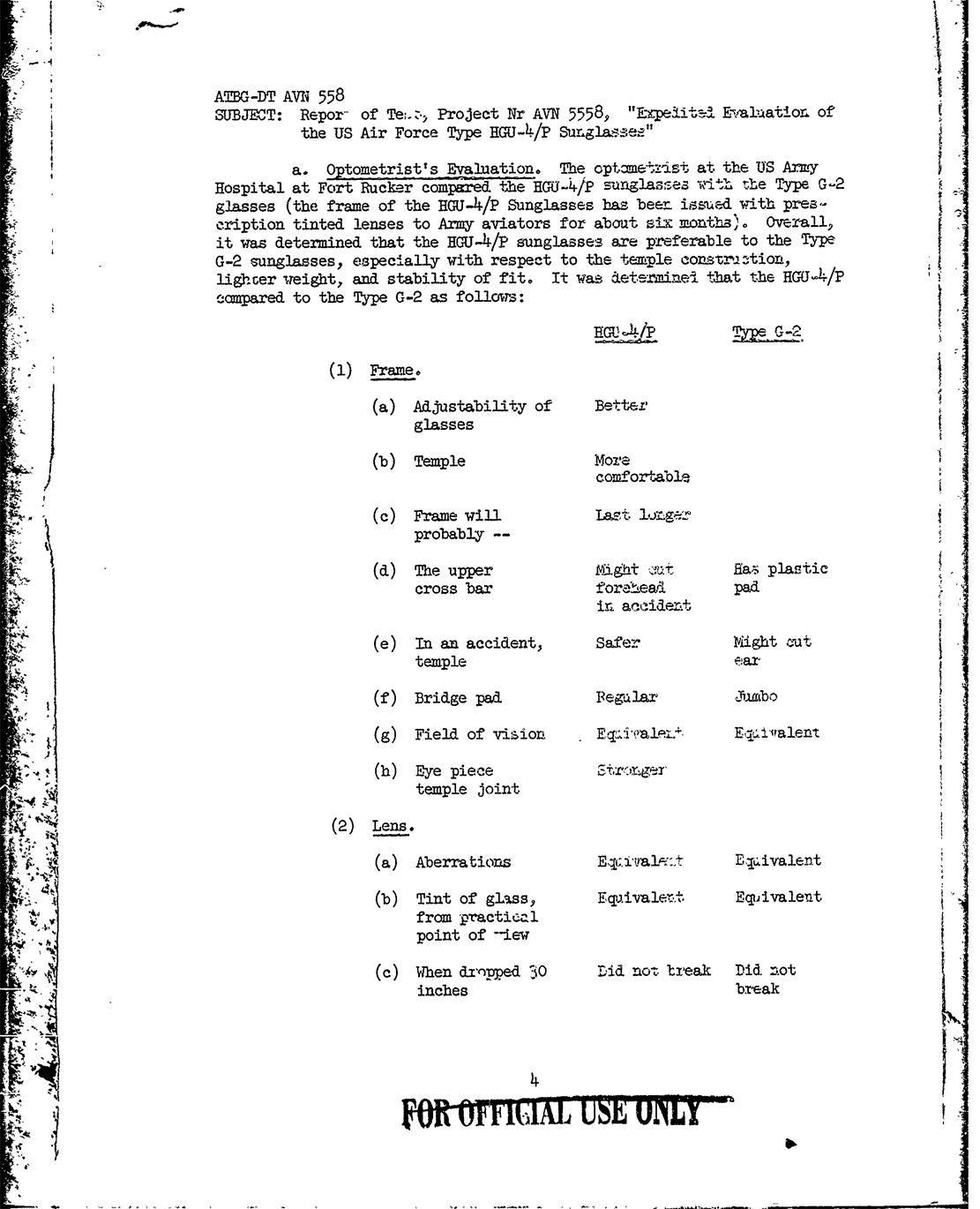
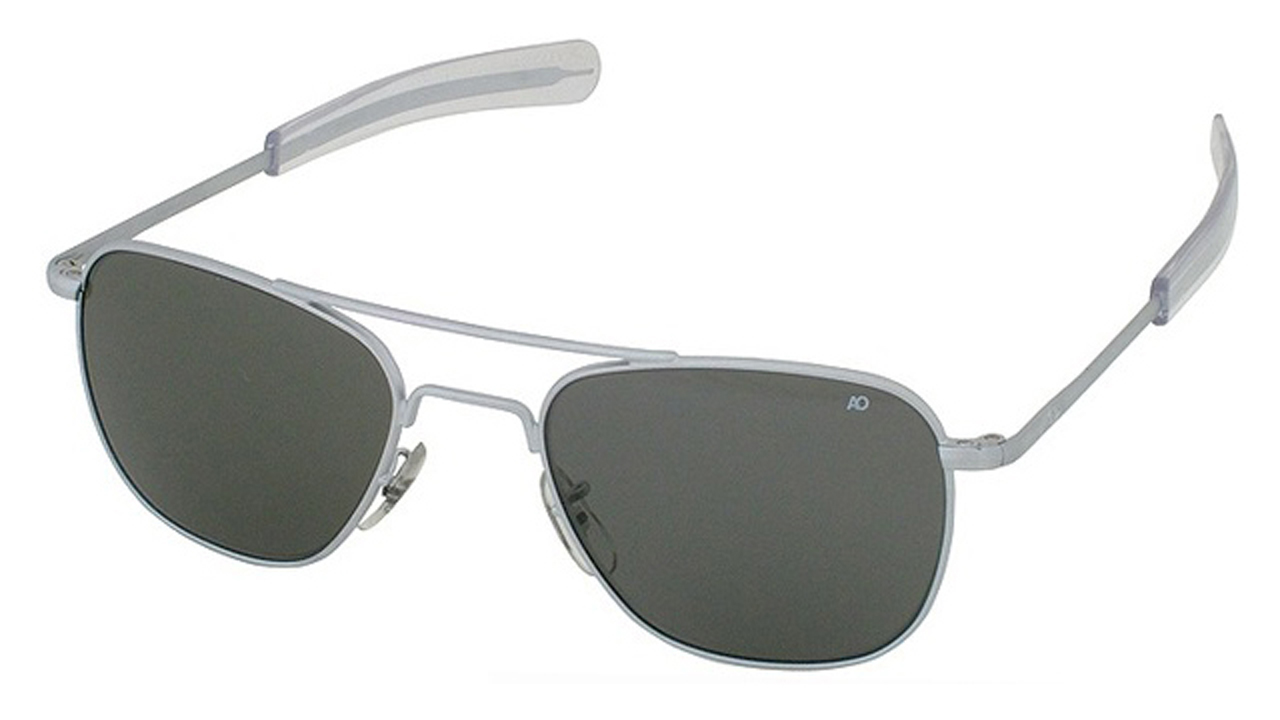
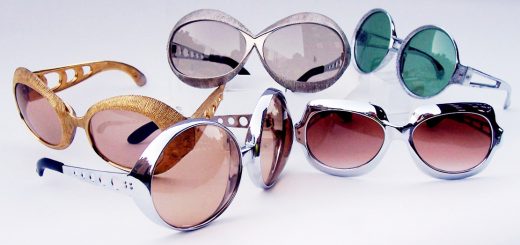

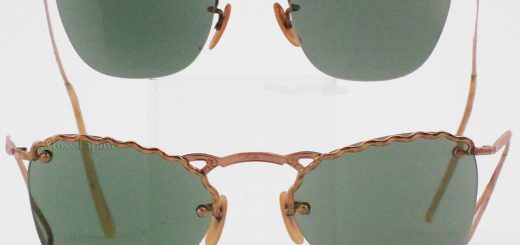
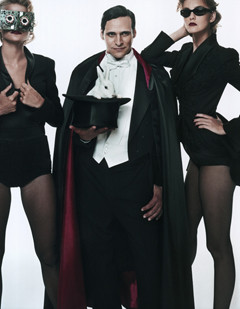
I am trying to find out about a pair of vintage Ray Ban aviators. They are marked 14k on the bridge. They have no other stamps on the frame. They do have the serial number 008 – M6257M / IR / GD on the clear plastic ear piece. The right lense has Ray Ban in top corner and each lense has the small BL. Do you know anything about these and if they are real. The frames are not attracted to a very strong magnet. Thanks so much for any information.
Those were produced in 1999 or earlier, since Bausch & Lomb engraved their initials on the lenses. I believe Ray Ban did a small run of solid gold aviators back in the 1980s or 1990s. Do a gold test. They sound beautiful.
Great stories! I have a pair that came in an old Ray-Ban case but not a single mark or trade name on them. They look vintage WW2 but who’s to say.
The WW2 aviators generally had silver colored frames. Reading the military specs I was mildly surprised to learn they were plated in rhodium, at least by 1958. I’d always figured they were all just nickel silver or plated in nickel.
I think all the contractors put a maker’s mark on the bridge of the frames, but who knows? Aviator sunglasses and A2 and G1 flight jackets sure left a mark on fashion.
Neat information! Can we get some samples for the cadet of the Harrisburg International Somposite Squadron 306! I know that is far-fetched buth hey it’s worth a try. And if you can afford it through in a frww pair for Capt. Daryl Rutt and myself SM Charlie Gray, and the 6 other Senior Members!
Civil Air Patrol. Doesn’t the Air Force supply you with uniforms and gear? They have more pull with their contractors than I do.
Thanks for the stories!
I have a question though.
I cannot find any info on who was eligible to wear sunglasses in US Army of WW2. My understanding is that theae were officers and pilots, but no NCOs. Correct me if I am wrong pls.
I believe the aviators technically were for flight crews. So were A2 jackets, but McArthur had aviators and an A2. I’m sure some others high on the food chain were able to get some as well. That worked both ways, though. Flight crews were issued B3 jackets, but I’ve heard many got their hands on D1 ground crew jackets because they were less bulky in a cockpit.
I have a question. Back in 1975 I lived in an apartment complex very near the Columbus AFB in Mississippi. A young pilot from the Academy gave me a pair of aviators he was wearing and the case. I have had them ever since. Problem is my28 year old grandson now WANTS them. I want to purchase the same glasses for him because he is not getting mine. So are my glasses AO or Randolph? And what is the closest model to them?
You should find the name of the contractor that produced them stamped on the bridge. I don’t think they were making gold filled frames of this type in 1975 any more. Those are expensive on the secondary market. I know Randolph still produces sunglasses made to mil-spec. I’m pretty sure AO does, too. You pays your money and you takes your choice.
Hey, hope you still look at this page for questions. I picked up a pair of HGU-4/P aviator sunglasses, marked Martin Copeland and has their stylized logo, in size 5 1/2. I was issued Randolph Engineering framed glasses when I was on active duty, and I know that American Optical had the contract first until 1978. When did Martin Copeland make military eyewear? Thanks!
I think Martin Copeland closed in the early 80s. They were a Rhode Island company. So you might figure they had the contract sometime between 1978 and 1982 or so. Thing is, though, they might have been awarded a contract and produced simultaneously with AO. You can be sure they were issued before Grenada.
Strangely I knew a guy who wound up with some of Martin Copeland’s machinery and does small scale production up in Rhode Island. I remember when he was trying to acquire the machines; I also met the old technician from Martin Copeland that had them. Interesting people.
I found a few vietnam war period sunglasses made by General optical, was there a manufacture named GO?
General Optical held the patent for a widely used phoropter during the 1920s called the Genothalmic Refractor. The company was apparently sold to Shuron in 1927. I’m unaware of any other manufacturing companies that used the name.
I’ve never seen a G.O. HGU 4/P (or anything else bearing the G.O. name), but that only means I’ve never seen one. Perhaps Shuron used the name and manufactured the sunglasses.
I’d ask them.
Thanks for your reply
I have found some G.O HGU-4/P sunglasses on eBay, they look quite vintage,the “General optical” on the leg of glasses.I can’t tell if they are fake.some of them with the leather cases, and there are same words as American optical HGU-4/P’s case. except the contractor :General optical.
And the seller said they were from the Vietnam war.
I just looked myself. They seem legit. As far as I know, General Optical was purchased by Shuron nearly 100 years ago and was not an active company during the Vietnam war. I’d imagine the Department of Defense would have a record. Shuron went bankrupt in 1992; their old factory is apparently a Superfund site now. The brand was revived in recent years, and perhaps its current owner has records.
I will nose around for information and will update if I find anything.
If you look at vintage and new AO Original Pilot Aviator Sunglasses, you will see, that the shape of the frame changed drastically in the last 10 years or so. Reason is, that AO was taken over from Randolph Engineering and, frankly, Randolph doesn’t give a damn about the original design.
I contacted them, asking why they changed the design of the ORIGINAL PILOT and sent plently of photos as proof, that their current product is drastically different than the original design. If you look at old photos of pilots wearing the AO Original Pilot, you see the difference from miles away.
Their response was pointless. They denied that there’s any difference. How blind do they expect us to be?
So I’m hunting on ebay for the classic product. Randolph is a bad knock off.
I can’t speak to that, since I haven’t seen the frames in question. American Optical has since been purchased by State Optical in Chicago. I was flown out there to discuss old AO product with them around the time this occurred. Hopefully you’ll find current product more satisfactory.
Hi can you tell me anything about the Welsh HGU-4/P’s? I have a pair that are 12k gold filled. I also have a pair of Ray Ban”s that my dad bought when serving in Korea around 1946 or 47. Gonna get both fixed up and add my prescription lenses.
Sounds like a good thing to do. Mil-spec quality, especially then, tended to yield products that lasted a long time. In this case, generations. Welsh made a lot of safety and special purpose eyewear. I have a few with red lenses. I was once told these were supplied to pilots to somehow adapt their vision for night missions. I never verified this and don’t know if it’s true, but it’s interesting if true.
Hello, I have my dads early HGU-4/Ps by American Optical from when he enlisted in 1959, only a year after that Air Force evaluation. They are gold in color but not gold filled. He was issued these as part of his gear at Shaw AFB.
Question: If the military is all about purpose and efficiency /dollars, why would the military issue anything gold filled? It would just be an added expense. Were those versions private purchase?
Were they issue or did he buy them at the PX?
I have a question, did Ray Ban make aviator glasses, yellow glass, bullet hole style with no markings during WW2 ?
Those were shooters, and not military issue. The yellow lens cut down ambient haze. Fun fact: the hole at the bridge was for the wearer to put their lit cigarette, to free their hands while shooting at the range.
I own a pair of General Optical sunglasses with the HGU 4/P style. The frame is marked “5 1/2 GENERAL OPTICAL” on the right temple, with the same inscription appearing upside-down on the left temple, similar to the AO or Randolph models. There’s an inscription that appears to be “G O” on the underside of the cross bracing above the nose bridge, also similar to AO or Randolph. The “G” almost looks like a “6.” No other markings, unlike Randolph, where the lens width and nose bridge size are typically found stamped on the underside of the nose bridge. Same frame size as the most commonly found AO or R/E HGU 4/P models- 5 1/2″ straight paddle temples, 52mm lens width, 20mm nose bridge.
One notable difference about the General Optical frame that I have is that the frame is chrome plated, unlike AO or R/E, which are typically (except for the 1/10 12k GF AO models) either gold electroplate or matte finish satin gray-silver. The chrome is still in near-new condition.. The plastic paddle ends of the temples have the usual yellowing found on many decades-old frames of this type, but no splitting.
Are you sure they’re chrome plated? Spec plating was rhodium, as I recall. Much nicer than chrome.
As for General Optical, as I mentioned in my response to an earlier question about them: “I just looked myself. They seem legit. As far as I know, General Optical was purchased by Shuron nearly 100 years ago and was not an active company during the Vietnam war. I’d imagine the Department of Defense would have a record. Shuron went bankrupt in 1992; their old factory is apparently a Superfund site now. The brand was revived in recent years, and perhaps its current owner has records.”
I have a pair of HGU 4/P PG-58 23K sunglasses by Command Marketing. Who was Command Marketing, and what years made ?
Don’t know the company offhand.
Hi, I have a pair of those as well! The sticker that came with them says command Marketing bought the old AO equipment and started to produce them again. I’m trying to find out about Command Marketing but it’s difficult. However their address on the sticker is the same area as AO. I think maybe they have “rebooted” AO now.
Actually a company called State Optical in Chicago bought AO. I can’t say anything about the old equipment, since State has their own facility in Chicago and almost certainly isn’t using the AO equipment (though I’ll ask the owner when I get a chance). They flew me out to ask about old AO product when they were planning the roll out. American Optical was in the doldrums for a while. Might ask about Command Marketing.
It would certainly be interesting to find out who or what Command Marketing were/are. I still have the sticker.
I think I know a couple people who may know. I’ll make a note to ask them when I see them.
Great article and you sure know your history on sunglasses. Here’s a stumper for you that’s plagued me for years:
While on Active Duty I always wore this model. In 1989’ish I came across a pair in a glasses store that had clear lens at the bottom for instrument reading. They weren’t a top to bottom fade but rather a straight line across the bottom third of the lenses from the nose then made a 45 angle to the cheekbone about 3/5 the way across. I was a lowly 1LT at the time and couldn’t justify the $100 price at the time.
I fly general aviation now and have been looking for this setup for years. I find it’s very difficult to read digital displays with shades on.
Ever seen this setup?
Best.
Yeah, I’ve seen many variations on the theme, the first perhaps being the old Ben Franklin bifocals. What you’re specifically referring to I can’t quite visualize. If you could find a picture and share it’d be appreciated.
Amazing post. Love Aviator sunglasses.
Thank you!
Hello! I found three pairs of sunglasses of my dad’s, who was in the Air Force from 1968-1989. Two of them say “5 1/2 AO American Optical” on the frames, and one says “5 1/2 American Polorizers.” They all look like the original pilot design. Do you know whether these offer UVA/UVB protection?
Depends on lens color and whether the lenses are original.
I was a 63150 (Fuel Specialist) at Duluth AFB MNOct.1975 – May 12979.I have a pair of these sunglasses from ’76 w/case in EXCELLENT condition.I was wondering are there any buyers?
Probably. There was a pretty solid market on eBay last I checked
Hello
My name is Finn Johansen and I am from Norway. My father was in the Norwegian Air Force and in 1973 he was at an airbase in Taxas for training. Ther he bought a pair of HGU 4/P. I have the original case and a lable that semes to have been attached to the gasses with a rubber band. The folowing text on the lable: Ray-Ban AmberMatic All-Weather Sun Glasses. Bausch & Lomb.
On the inside is a manual how glasses work.
My problem is that one of the temples is broken.
Do you know if it is possible to get a replacement temple??
He also bought a pair with more drope like lenses and i can see a stamp B&L Ray Ban 58 14, with what looks like a square printed between 58 and 14.
kind regards
finn Johansen
I’d guess the temples for most HGU 4/Ps are standard. Hinges and screws, too, probably even if the sunglasses were non-issue and purchased in the PX. I can’t be certain without seeing the glasses in person, but measure the temple in mm and write a company that currently has a contract to produce them, asking about a replacement temple in that size. Can’t be sure, but there’s a good chance they’ll fit.